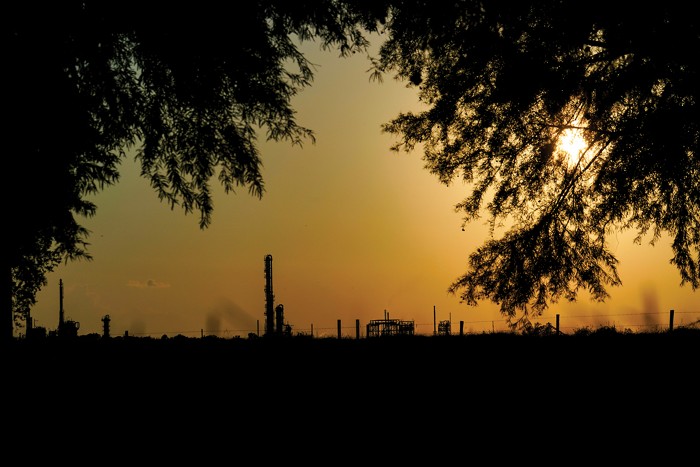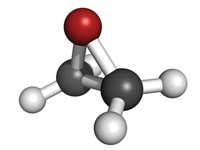Advertisement
Grab your lab coat. Let's get started
Welcome!
Welcome!
Create an account below to get 6 C&EN articles per month, receive newsletters and more - all free.
It seems this is your first time logging in online. Please enter the following information to continue.
As an ACS member you automatically get access to this site. All we need is few more details to create your reading experience.
Not you? Sign in with a different account.
Not you? Sign in with a different account.
ERROR 1
ERROR 1
ERROR 2
ERROR 2
ERROR 2
ERROR 2
ERROR 2
Password and Confirm password must match.
If you have an ACS member number, please enter it here so we can link this account to your membership. (optional)
ERROR 2
ACS values your privacy. By submitting your information, you are gaining access to C&EN and subscribing to our weekly newsletter. We use the information you provide to make your reading experience better, and we will never sell your data to third party members.
Pollution
EPA rule to cut chemical plant air emissions
Fenceline communities applaud, while industry threatens legal action
by Jeff Johnson, special to C&EN
April 11, 2024

In a final regulation, the US Environmental Protection Agency has limited toxic air emissions from chemical plants and introduced new air monitoring requirements, particularly for facilities near communities. Once implemented, the rule will be the first to upgrade EPA chemical plant emission controls and standards in more than 15 years, according to the agency.
The regulation will eliminate 6,200 metric tons per year of some 100 air pollutants. It is particularly aimed at reducing ethylene oxide and chloroprene emissions, which will be reduced by 80% at facilities covered by the regulation, the EPA says. It affects more than 200 chemical plants and includes equipment and processes used to make synthetic organic chemicals, polymers, and resins.
EPA administrator Michael S. Regan announced the final regulation April 9 in a signing ceremony at EPA headquarters, where he appeared with half a dozen residents of communities near chemical plants. Regan recalled a 2021 tour he took of fenceline communities in Louisiana, Texas, and Mississippi.
“We promised to listen to folks that are suffering from pollution and act to protect them,” Regan said at the ceremony. “Today we deliver on that promise with strong final standards to slash pollution, reduce cancer risk, and ensure cleaner air for nearby communities.”
The reductions will be achieved through plant improvements such as more efficient flares, vents, storage vessels, and heat exchange systems, as well as other controls. In addition, exceptions that companies have long enjoyed for plant start-ups, shutdowns, and malfunctions will be eliminated.
The regulation includes fenceline monitoring requirements for facilities that make or handle ethylene oxide, chloroprene, benzene, 1,3-butadiene, ethylene dichloride, and vinyl chloride. The EPA will make the emission data available to community members.
Chemical monitoring will be required within 2 years, except for chloroprene used at neoprene facilities, which must start just 90 days after the rule goes into effect. Monitoring data will be used to determine what further action may be required to reduce emissions.
When preparing to propose the regulation, the EPA for the first time conducted a community-based risk assessment, which considered the impact of all toxic air emissions within 10 km of a plant. According to the EPA, the regulation will reduce by 96% the number of people expected to have elevated cancer risk due to air toxins.
In background documents, the EPA singled out emission reduction implications for Denka Performance Elastomer’s facility in LaPlace, Louisiana, which the agency says is the largest source of chloroprene emissions in the US. Denka’s response may signal what lies ahead for the EPA.
Denka “vehemently opposes the compliance deadline imposed by EPA,” the company says in a statement. The firm says the regulation is “unprecedented and clearly driven by its ill-founded politicized approach to regulating chloroprene emissions at America’s only neoprene manufacturing facility.” Denka vows to mount a legal challenge to the 90-day compliance period and the rule itself.
Similarly, the American Chemistry Council, an industry trade association, criticizes the regulation, particularly its ethylene oxide toxicity provisions, which it says are “deeply flawed.”
The ACC says that those provisions, as well as the “recent onslaught of chemical regulations,” undermine other priorities of the Joe Biden administration, including its support for electric vehicle battery development, semiconductor manufacturing, and American jobs.





Join the conversation
Contact the reporter
Submit a Letter to the Editor for publication
Engage with us on Twitter